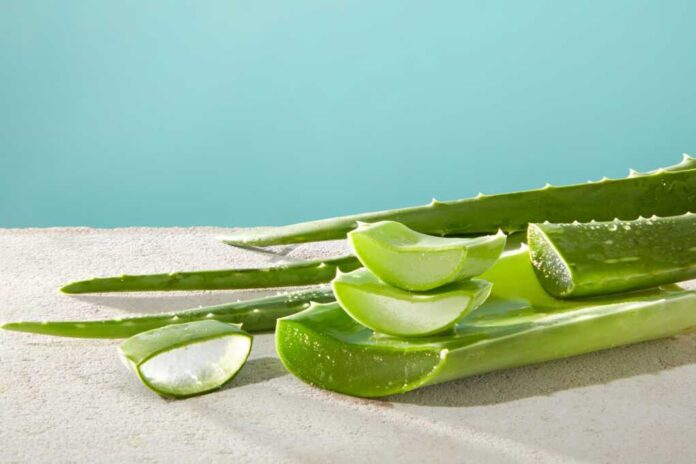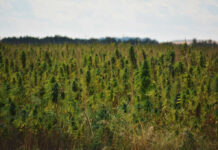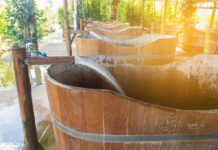
New research reveals aloe vera’s potent anti-aging properties can protect against skin damage, reduce wrinkles, and potentially treat various skin diseases through its rich array of natural compounds.
At a Glance
Groundbreaking studies confirm aloe vera effectively reduces signs of aging and helps prevent skin diseases
Aloe vera’s microbiome-friendly properties foster skin renewal while providing anti-inflammatory benefits
Scientists discovered that aloe vera particles protect against sun damage and aid in tissue repair
The plant contains vitamins C and E that stimulate collagen production and neutralize free radicals
Even aloe rind, previously considered waste, showed significant medicinal properties for skin health
How Aloe Vera Transforms Aging Skin
The humble aloe vera plant, often found on kitchen windowsills for occasional burn relief, is emerging as a powerful force in anti-aging skincare. Recent scientific investigations have uncovered that aloe vera contains particles capable of protecting against skin aging, sun damage, and supporting tissue repair. These properties have earned aloe vera the distinguished titles of “universal medicine” and “natural beautician” in dermatological circles. The plant’s effectiveness stems from its rich composition of vitamins, enzymes, minerals, and amino acids that work synergistically to rejuvenate skin cells.
What makes aloe vera particularly valuable for aging skin is its ability to stimulate collagen production—a crucial protein that maintains skin elasticity and firmness. As we age, collagen production naturally decreases, leading to wrinkles and sagging. Aloe vera’s vitamins C and E play a vital role in boosting collagen synthesis while simultaneously neutralizing free radicals that accelerate the aging process. Studies show that pretreating skin with aloe can inhibit aging cells and prevent damage that leads to wrinkles and other visible signs of aging.
THE VERSATILE MIRACLE PLANT. ALOE VERA 🌵
Aloe vera, often simply called Aloe, is a succulent plant species from the genus Aloe. It has been used for centuries for its healing and therapeutic properties, particularly in traditional medicine. Here are some key aspects of the…
— Liam Wilson PATRIOTS🇺🇲🇬🇧™️ (@pun_cfc) November 21, 2024
The Microbiome Connection
One of the most exciting discoveries about aloe vera involves its relationship with the skin microbiome—the complex ecosystem of microorganisms that live on our skin. A healthy microbiome is essential for proper skin function, immune response, and overall appearance. Aloe vera has been identified as a microbiome-friendly botanical with prebiotic potential, meaning it provides nourishment for beneficial bacteria that maintain skin health. This relationship between aloe vera and skin microorganisms represents a revolutionary approach to skincare that addresses skin aging at its most fundamental level.
The plant’s anti-inflammatory properties further enhance its microbiome benefits by calming irritated skin and reducing redness. Unlike harsh chemical treatments that can disrupt the delicate balance of skin microbiota, aloe vera supports the skin’s natural barrier function while enhancing moisture retention. This dual action makes it particularly valuable for mature skin, which tends to experience increased dryness and sensitivity. The growing focus on microbiome-friendly skincare positions aloe vera as a key ingredient in future dermatological innovations.
Beyond the Gel: Surprising Research Findings
While most people associate aloe benefits with the clear gel inside the leaves, recent research has revealed that the rind—previously considered waste material—possesses significant medicinal value. In fact, studies show that the rind can outperform the gel in tissue repair and protection against DNA damage. This discovery opens new avenues for utilizing the entire aloe plant in skincare formulations. The comprehensive protective effects extend beyond anti-aging to include potential applications for various skin diseases.
Aloe vera’s therapeutic potential extends to accelerated wound healing, particularly for burns and sores. Its antibacterial properties help prevent infection while promoting tissue regeneration. For individuals over 40, this translates to faster recovery from skin injuries and better management of common skin conditions that become more prevalent with age. Additionally, research indicates aloe vera may help treat conditions like seborrheic dermatitis and reduce dental plaque when used in oral care, highlighting its versatility beyond topical skincare applications.
Incorporating Aloe Into Your Skincare Routine
Harnessing aloe vera’s anti-aging benefits can be accomplished through various forms of the plant. Pure aloe gel applied directly from the leaf provides the most potent concentration of active compounds. For those without access to live plants, high-quality commercial preparations containing significant percentages of aloe vera can be effective alternatives. When selecting products, look for those listing aloe vera high in the ingredients list and preferably combined with complementary ingredients like hyaluronic acid, jojoba oil, or argan oil that enhance moisture retention and skin barrier function.
While topical use of aloe vera is generally considered safe for most people, those with known allergies to plants in the Liliaceae family should perform a patch test before widespread application. Oral consumption of aloe, though beneficial for certain conditions like constipation or potentially lowering blood sugar, should be approached with caution and ideally under medical supervision. As the science behind aloe vera continues to evolve, its standing as a natural, comprehensive approach to skin health and anti-aging only grows stronger—offering those seeking healthier, more youthful skin a time-tested solution backed by modern research.
Sources:
https://www.mdpi.com/2076-3417/11/12/5660
https://www.researchgate.net/publication/311657558_Aloe_Vera_in_Dermatology-The_Plant_of_Immortality


















